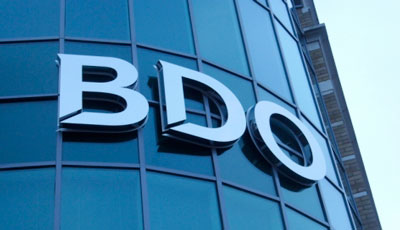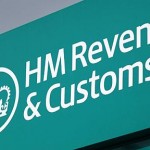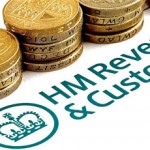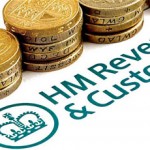UK – Offshore Tax Disclosures – Use The LDF while you can

[Original article was updated by its source: BDO]
Tax authorities around the globe are increasingly working together to fight tax evasion and aggressive tax avoidance to collect more tax. In the UK, HMRC is geared up to take full advantage: anyone who needs to put UK tax irregularities right should do so while the Liechtenstein Disclosure Facility (LDF) is still available.
LDF closes in April 2016
The LDF will close to new registrations on 5 April 2016. Although the terms of the facility were changed in August 2014, it remains the most attractive and successful disclosure facility that HMRC has offered. The key benefit, immunity from prosecution, remains open to all users, and some will still be able to benefit from low fixed penalty rates and an ‘amnesty’ period.
The global tax environment has changed dramatically since the LDF was introduced in 2009 and there are now many more reasons to use the LDF to resolve UK tax problems.
Swiss assets
The groundbreaking Swiss/UK deal was intended to settle tax arrears for UK residents with Swiss assets up to 31 December 2012. Many opted for disclosure to HMRC, but many did not – opting instead to pay a one-off withholding tax for the past and an annual withholding tax on future income and gains generated by their Swiss assets. A common misconception was that this provided anonymity, but UK resident account holders who chose the withholding tax route must still disclose their Swiss income and gains from 1 January 2013 on their UK tax returns. Failure to do so could result in an investigation and potentially large fines if HMRC subsequently finds out about their offshore assets.
Unlike the LDF, the agreement does not give immunity from prosecution, and is backed up by an information sharing provision allowing HMRC to request account details of suspected tax evaders (whether the individual authorises their bank to respond or not). More recently, Switzerland has now signed up for automatic information exchange from September 2018 – so if HMRC cannot already identify all undeclared Swiss assets and income, it will be able to soon.
UK residents who opted for the one-off withholding tax should be aware that the agreement did not cover withdrawals made from an account prior to 31 December 2012 or other assets such as real estate. In these circumstances, the LDF can be used to regularise all offshore assets and prevent an unwelcome enquiry from HMRC.
The Swiss/UK deal also did not include discretionary trusts. In advance of automatic exchange of information, many are now being reviewed to ensure historic compliance with UK tax law and to ensure that HMRC cannot challenge the legal validity of these trusts. Again, the LDF can be used to obtain clarification where uncertainties arise or to deal with disclosures arising from trusts as appropriate.
Automatic exchange of information
When the US authorities launched the Foreign Account Tax Compliance Act (FATCA), it presented the UK Government with an opportunity to develop similar agreements with its British Overseas Territories and Crown Dependencies. It will start getting data on the bank accounts held in those countries by UK residents no later than 30 September 2016.
The OECD’s Common Reporting Standard (CRS) also evolved from FATCA and, by 2017, over 50 countries are to start automatically exchanging tax information – reporting data direct to HMRC. These early adopters will exchange relevant financial information concerning the 2016 calendar year in September 2017 and annually thereafter. Other countries will join in and by 2018, there will be few places left for tax evaders to hide funds from tax authorities around the world.
Under the CRS, the interests of UK resident but non-UK domiciled individuals (a direct interest in a bank account or an interest in a trust) will be reported in exactly the same way as for UK domiciled individuals.
Equally, the interests of UK resident settlors and beneficiaries in overseas trusts will be reported, even if the settlor is excluded from benefit. For example, the interest of the settlor of a discretionary trust will be reported annually, as will the interest of a potential beneficiary in each year in which that beneficiary receives a distribution. The name of the reporting financial institution (eg bank or trust) will also be reported, giving HMRC a list of offshore banks and trusts/trustee companies servicing UK resident clients.
Register of beneficial ownership
In 2015, the UK will create a public registry of company beneficial ownership that will contain information on individuals with an interest in more than 25% of a company’s shares or voting rights, or who otherwise control it to a similar extent.
The registry will allow “…exemptions from public disclosure…..where it is necessary to protect individuals whose safety might be put at risk”. However, it is unlikely that such exemptions will be widely available. For example, where a trust meets the beneficial owner tests, the trustees’ names will go onto the register.
Other jurisdictions, including the G8 countries, are expected to create similar registries to make such information available. Although not all will be public registries, the data will be available to the tax authorities around the world.
Further moves to make UK entities (including limited liability partnerships) more transparent include: the abolition of bearer shares; a ban on one company acting as a director of another (other than in group structures) and tighter rules on nominee directors.
Connecting the dots
HMRC’s Connect software is a ground breaking data matching tool that enables HMRC to cross check one billion bits of data from HMRC records and third party data to identify links between people, organisations, assets and income in a matter of seconds.
Alongside rationalising its existing databases, HMRC now collects tax information digitally from employers, companies, banks, other Government agencies, credit card companies and many other third parties. Overlaying the CSR data will allow it to identify UK residents with overseas assets and quickly check that their UK tax returns are correct. With 150 data analysts and 3,200 investigators working on projects to identify risk trends and individual tax avoiders, the chances of keeping offshore assets secret from HMRC in the future are remote: it is even proposing to increase the use of reward payments to those who inform on offshore avoidance.
Tougher penalties
For offshore tax avoidance, the level of penalty reflects the tax transparency of the territory involved in the avoidance: for certain less transparent jurisdictions the penalty can be 200% of the tax at stake. The latest proposals to expand these penalties include:
• Bringing inheritance tax avoidance within the rules
• Extending the rules to avoidance involving the transfer of the proceeds of a deliberate UK tax error or failure to a less tax transparent jurisdiction
• Increasing the penalty by 50% if funds are moved to a less transparent jurisdiction to avoid the CRS
• Lower penalties where the avoidance involves a county signed up to the CRS.
Resolve tax problems before April 2016
Complete compliance and transparency on UK tax has always been the most sensible approach for individuals and their advisers, but the move towards global tax transparency now makes it essential.
Anyone who needs to bring their UK tax affairs up to date should seek specialist advice now while the advantages of the LDF are still available because this facility for resolving UK tax irregularities is unlikely to be extended or repeated.
Source: BDO International – UK – Offshore Tax Disclosures – Use The LDF while you can









![UK Offshore Tax Disclosures – Use The LDF while you can [Update]](https://www.onestopbrokers.com/wp-content/uploads/2014/12/tax-post-150x150.jpg)



















